Lenwade and Fakenham
On Thursday and Friday 2nd and 3rd July 1970, John Tolson visited the Lenwade and Fakenham branches to photograph the trip freights from Wensum. A selection of John's images has been made available by Trevor Davis and gives a fascinating insight into pick-up freight operations in East Anglia in the difficult period of the early 1970s when all steam had gone from BR, the worst of the Beeching closures had taken place and the railway was still effectively operating as a steam railway but much hollowed-out and with diesels.
We are grateful to John for capturing these images and to Trevor for allowing their use on the RCTS website.
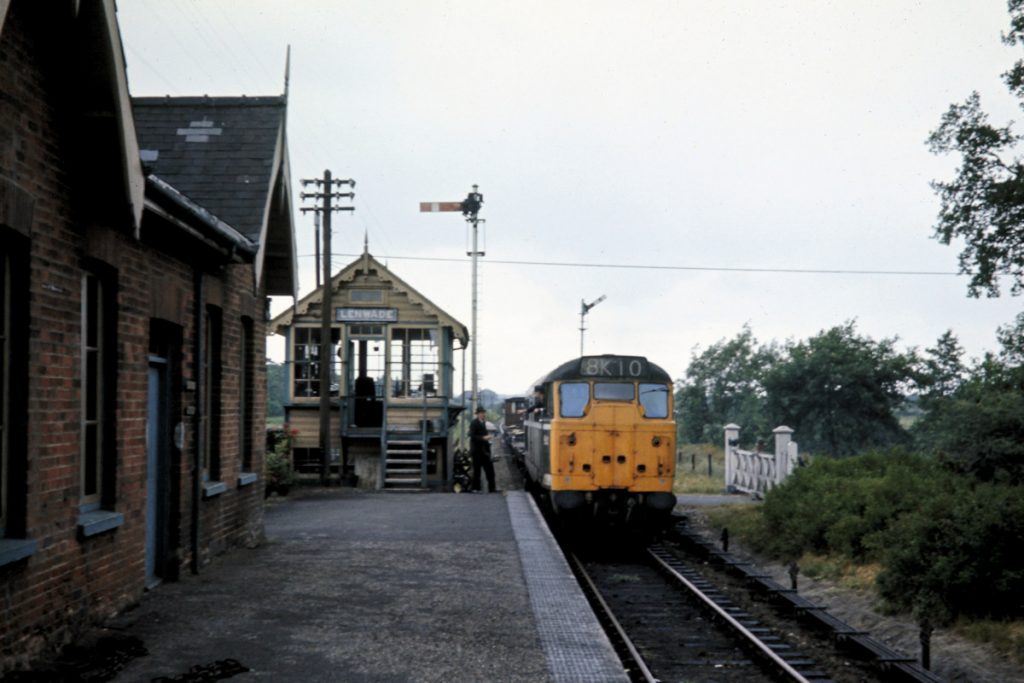
On a dull July 2nd 1970, Brush Type 2 No. 5621 (later 31197 then 31423) surrenders the token (which can be seen mid-flight, on its way to the ground) to the well-dressed signal man at Lenwade as it arrives with 8K10 from Wensum. This was a journey of approximately 30 miles (8 miles to Wroxham then a further 22 miles via Coltishall, Aylsham and Reepham) and was timetabled for just over two hours. Although the passenger service at Lenwade was withdrawn on closure of the entire Midland and Great Northern system on 28th February 1959, the signal box and station infrastructure as a whole were still in good condition at this time. Photo: John Tolson, courtesy Trevor Davis.
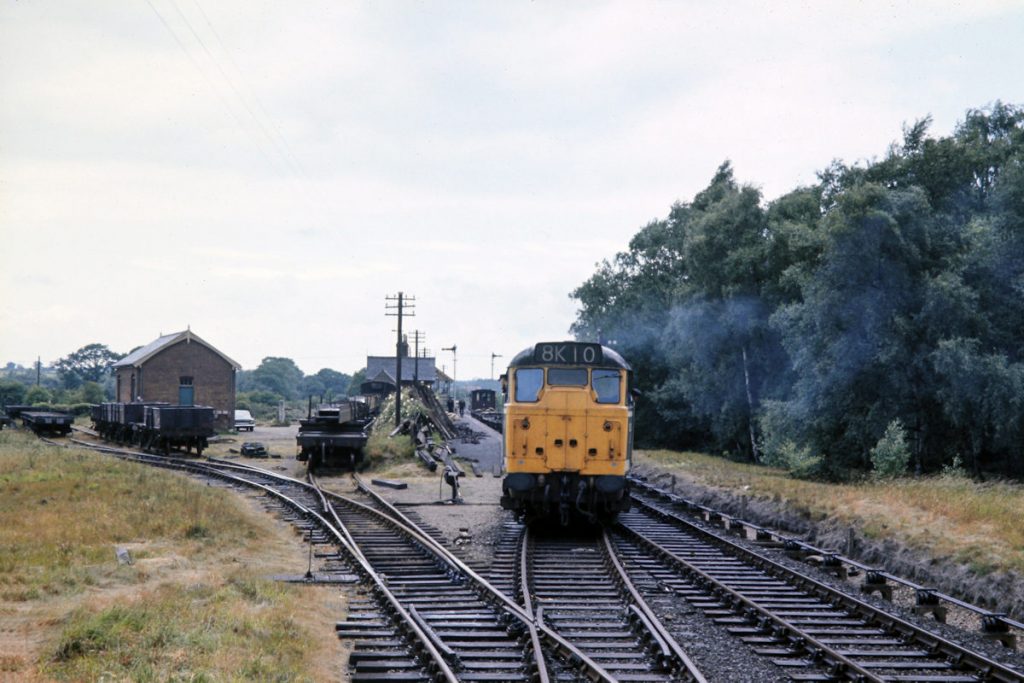
On Thursday 2nd July, 1970 Brush Type 2 No. 5621 has just arrived at Lenwade and dropped off its empty bolsters, having travelled from Norwich via the Themelthorpe Curve. This connection was opened in September 1960 to join the former Wroxhan-County School line to the M&GN line South from Melton Constable. Between closure of the M&GN system in February 1959 and opening of the Themelthorpe curve, trains for the Norwich City line had to travel up to Cromer then round through Sheringham and Melton Constable - a route so circuitous they were known to railwaymen by the term 'Round the World'! Note the unusual catch points in the pointwork at the exit from the sidings. Photo: John Tolson, courtesy Trevor Davis.
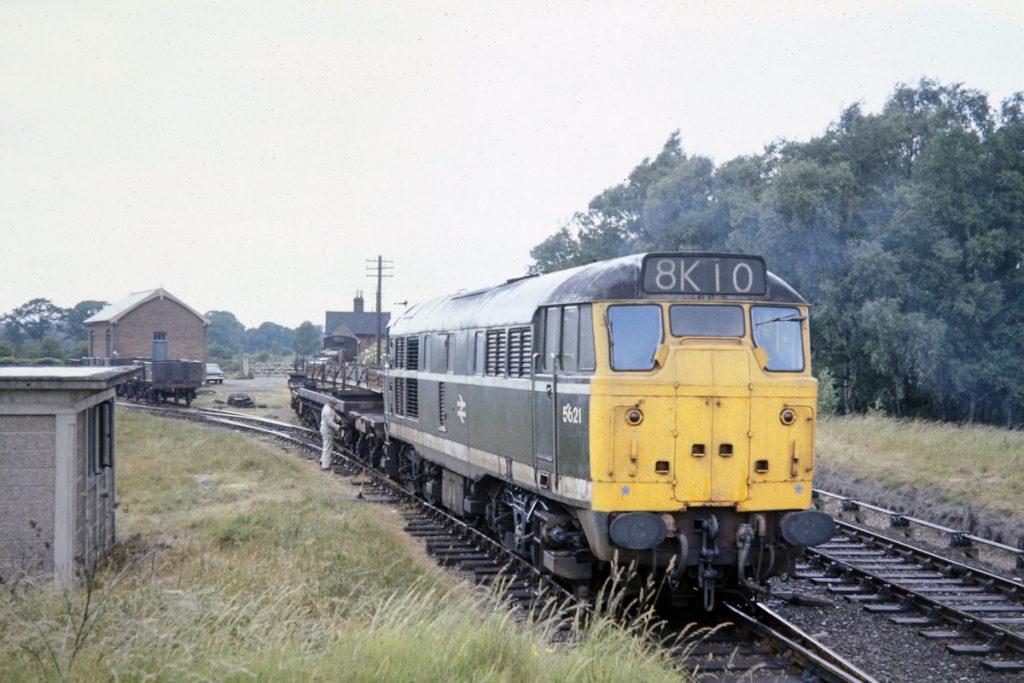
The concrete works at Lenwade enjoyed a period of prosperity in the 1960s and early 70s due to the use of pre-cast steel and concrete building components, made at Lenwade, in the housing and North Sea Oil industries. Much of this traffic went by rail, but the line's fortunes declined when these components became too large to carry within the loading gauge and when it became apparent that they had poor performance in fire conditions. The last train ran in 1981, but the line from Aylsham to Wroxham is now part of the Bure Valley Railway. On July 2nd, 1970 Brush Type 2 No. 5621 draws steel girders out of the small yard and into the concrete works. Photo: John Tolson, courtesy Trevor Davis.
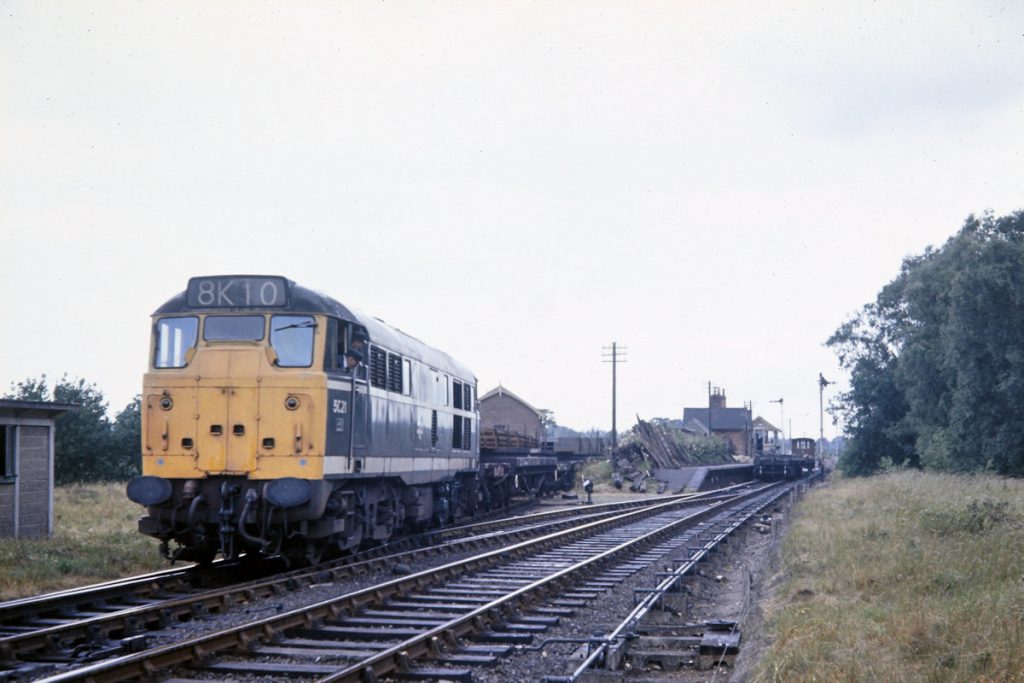
A delightful scene captured by John Tolson at Lenwade station on July 2nd 1970, in which Brush Type 2 No. 5621 draws a short rake of bolsters out of the station yard to run down to the Concrete Works behind the photographer. Although the passenger service was withdrawn in February 1959, Norwich City station continued as the city's main coal depot until replaced by one at Victoria in 1969, at which time the line was cut back to Drayton to serve the gravel depot and then subsequently cut back to Lenwade. Photo: John Tolson, courtesy Trevor Davis.
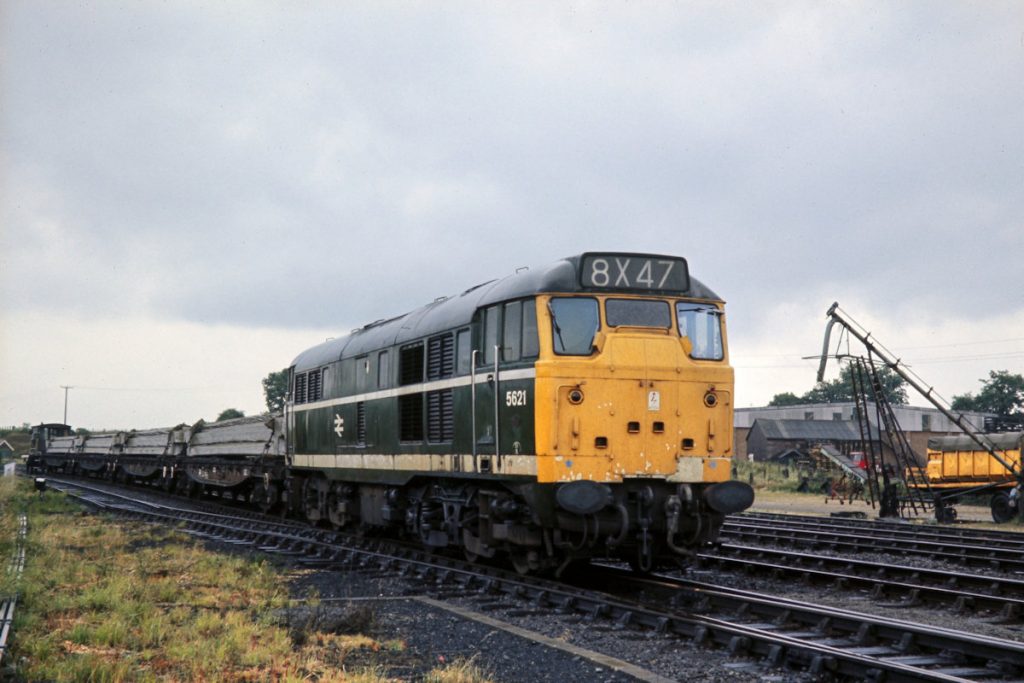
Looking South at Lenwade towards Norwich City on July 2nd 1970, after a heavy downpour, Brush Type 2 No. 5621 prepares to return to Norwich with reinforced concrete beams on four bogie bolsters. The average speed of the journey was slow, with a 10 mph speed restriction round the Themelthorpe Curve and 25 mph all the way to Wroxham, meaning a journey from Norwich and back effectively took a whole shift. With a driver, second man, guard and signal man it is not difficult to see why the economics of this type of traffic were not strong. Photo: John Tolson, courtesy Trevor Davis.
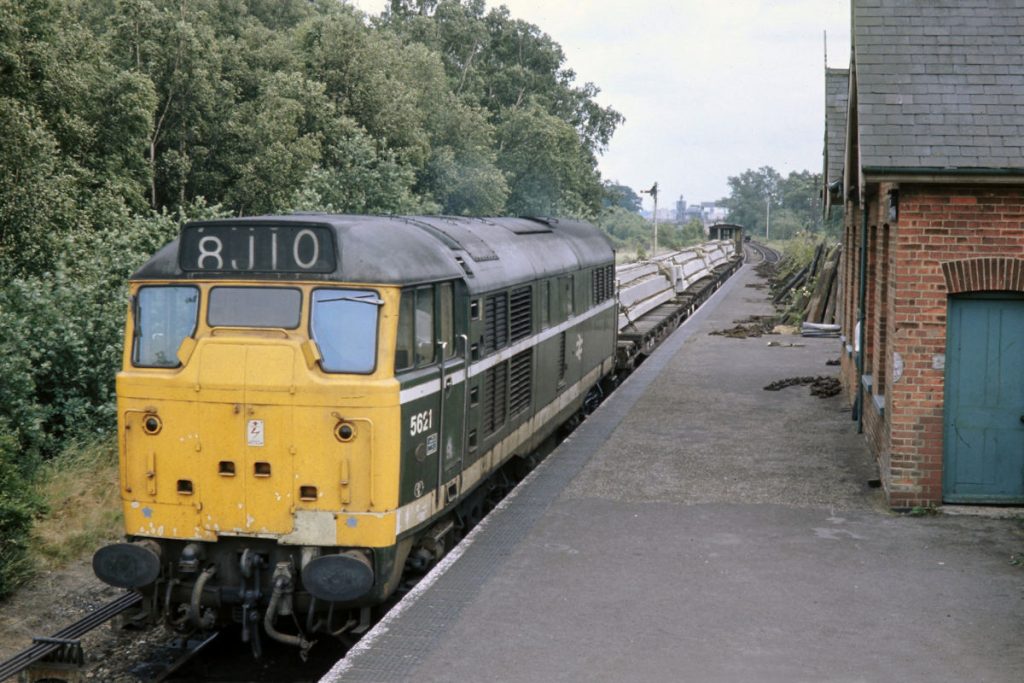
Seen from the Signal Box steps at Lenwade, Brush Type 2 No. 5621 has collected four bolsters of reinforced concrete beams and begins its journey back to Norwich on July 2nd 1970. The headcode 8J10 is a little confusing as the letter J on the Eastern Region was used for trains destined for the Sheffield Division, but the Norwich Division also used J for trains to Whitemoor and Norwood Yard. Perhaps this indicates an independent spirit in Liverpool Street! Photo: John Tolson, courtesy Trevor Davis.
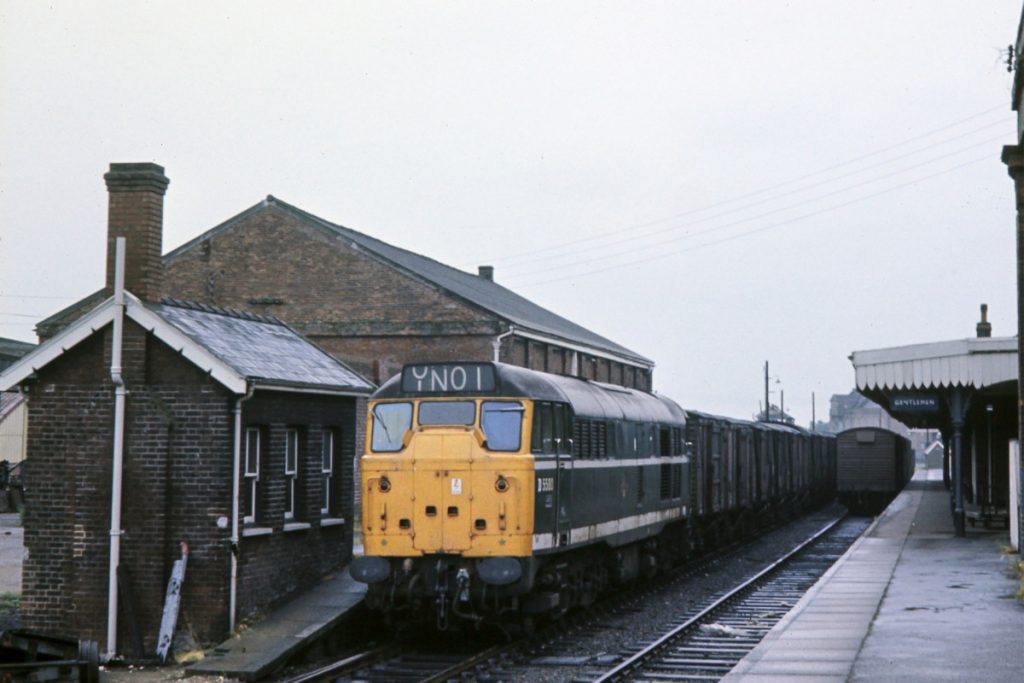
Dereham today is the hub of the Mid-Norfolk Railway and is considerably busier than the 1970s when all the passenger services had gone and the daily Wensum to Fakenham trip was all that remained. That said, traffic levels on July 3rd 1970 are still strong, with a healthy rake of four wheelers on its way up the Branch on 8K01 from Wensum. The roof of Dereham Central box, which formerly controlled the Northern point of the triangular junction with the Swaffham line, can be seen above the wagons. Photo: John Tolson, courtesy Trevor Davis.
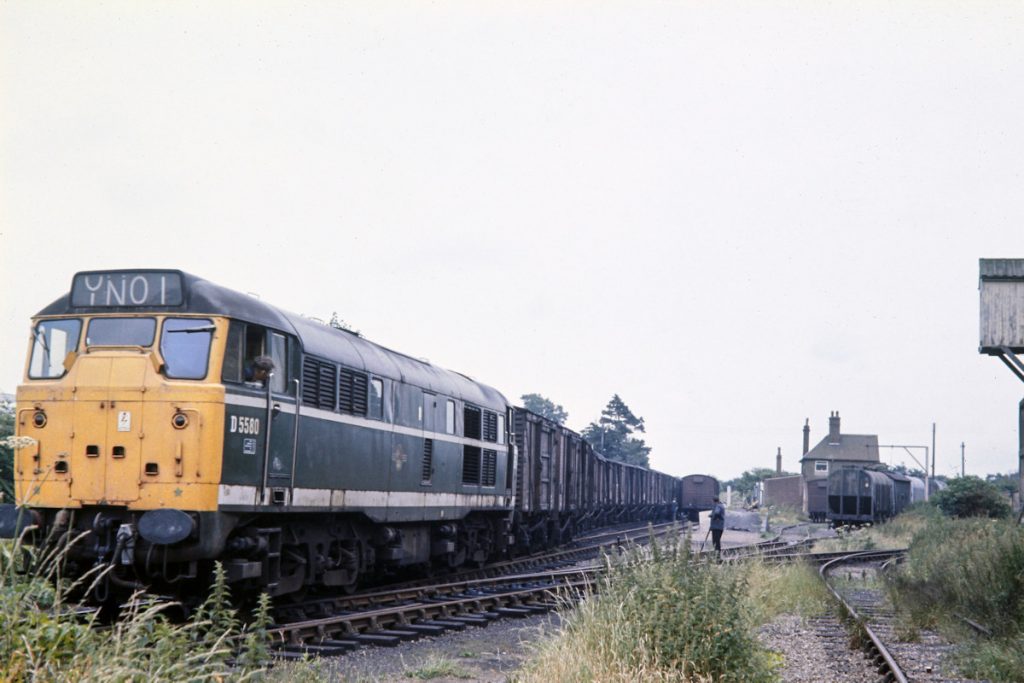
Grain and agricultural traffic (e.g. seed potatoes and fertilisers) were important traffic on the railway through to the end of the 1970s. In this view of D5580 at Ryburgh on July 3rd 1970, grain wagons can be seen in the sidings to the right and the wagons at the station platform are about to be collected. Pick-up freight trains of this kind are simply no longer a part of the railway scene and everything is now transported by road, which is a great loss to the nation's overall effort to reduce carbon emissions. Photo: John Tolson, courtesy Trevor Davis.
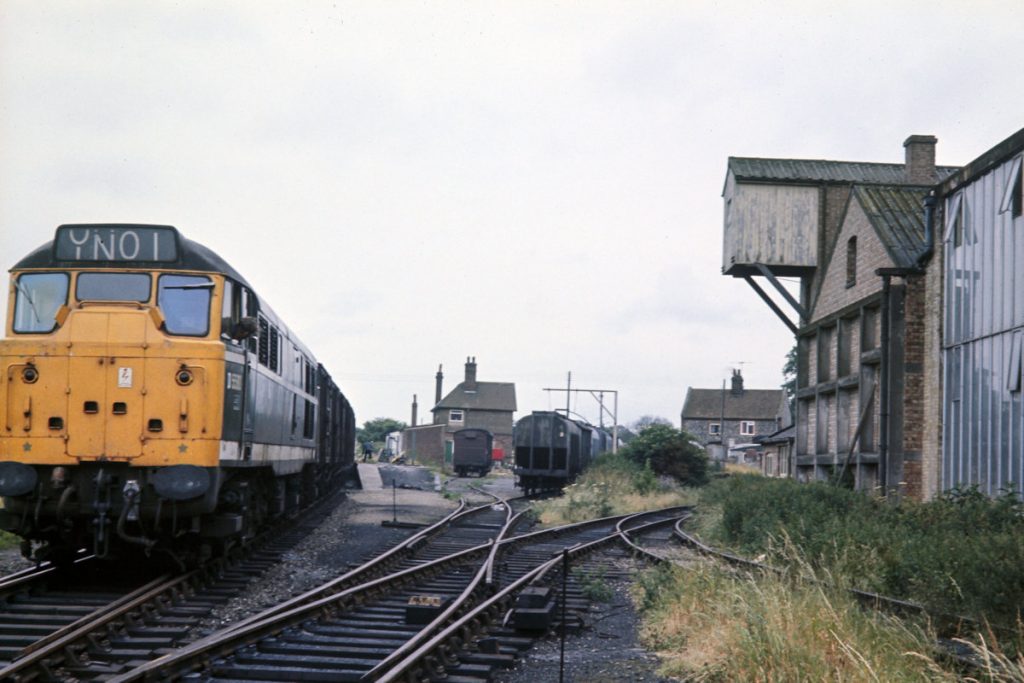
The guard couples up wagons in the station platform to 8N01, the daily Wensum to Fakenham pick-up freight, on a dull Friday July 3rd 1970. Passenger services were withdrawn on 5th October 1964 when the Dereham-Wells service ceased and the line from Wells to Fakenham was closed. The line from Ryburgh to Fakenham was closed on 1st January 1980 and the final freight train to depart from Ryburgh was in August 1981. However, it is certainly not beyond the realms of possibility that the Mid-Norfolk Railway may once again bring trains into the town. Photo: John Tolson, courtesy Trevor Davis.
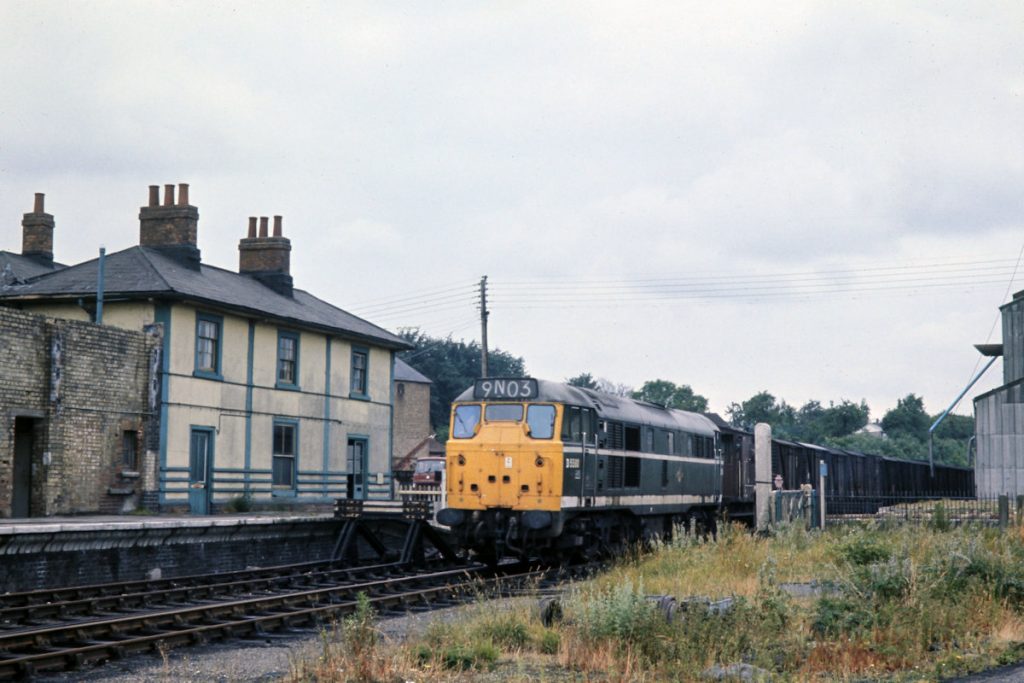
Making its way back to Wensum on Friday July 3rd 1970, Brush Type 2 No. D5580 (later 31162) eases over the level crossing and through the former station at Fakenham East. Although vacuum fitted, guards vans were retained on this and similar workings to assist with opening and closing the many level crossings which on branches such as Fakenham and Lenwade had lost their crossing keepers and were train crew operated. Photo: John Tolson, courtesy Trevor Davis.
